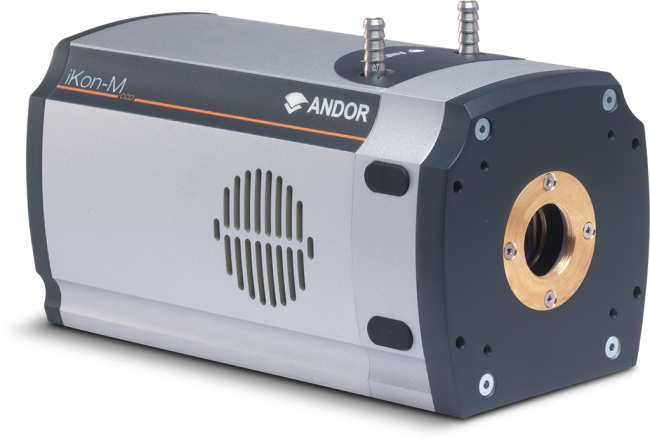- 24 µm pixels – The large 24 µm pixels are designed with maximum well and photon collection area in mind.
- Unparalleled thermoelectric (TE) cooling performance – Negligible dark current, without the aggravation or safety concerns associated with LN2. Market-exclusive TE cooling specs of -100°C with 10°C water chiller/recirculator available from Andor); -80°C with air-cooling via integrated low-noise fan.
- Up to 95% QE – Back-illuminated sensors available for maximum photon capture and higher S/N ratio.
- UltraVac™ – Proprietary and proven vacuum process, critical for sustained vacuum integrity, sensor protection and unequalled cooling, year after year.
- Ultra low-noise readout – Down to 2.5 electrons rms with intelligent low-noise electronics, offering the most “silent” system noise performance available.
- Software selectable readout speeds (up to 5 MHz) – Faster readout for focusing and following dynamic events, slower readout for absolute minimal noise performance.
- High quantitative dynamic range – 16-bit scientific grade A/D, quantifying both strong and very weak signals in a single frame.
- Single window design – Maximum photon throughput.
- Software selectable pre-amp sensitivity – User configurable system optimization.
- External trigger – TTL input and output for synchronization to experimental events.
